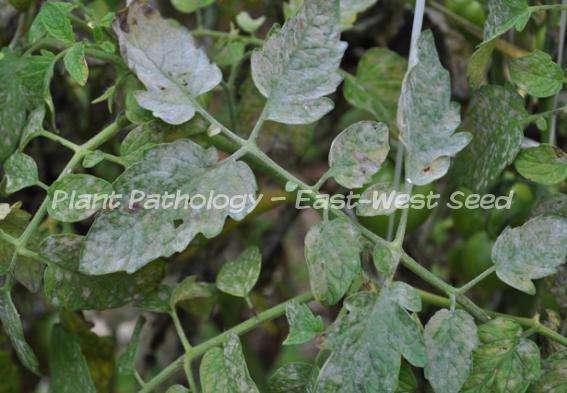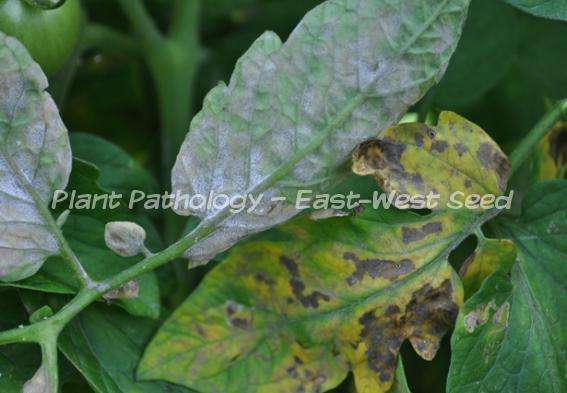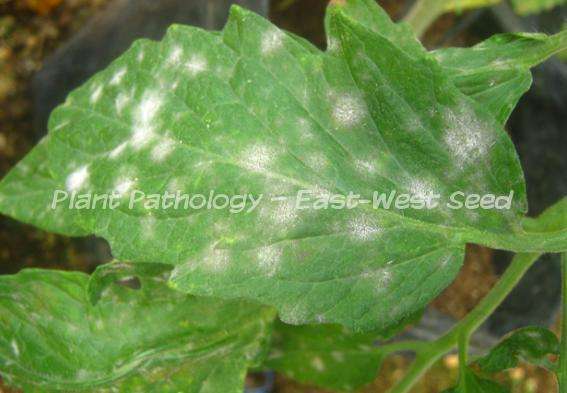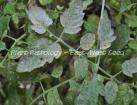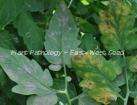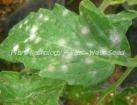Causal Agent:
Fungi (Oidium sp.; Oidiopsis sp.)
| Characteristic Symptoms: | |
 |
Affected leaf consists of white powdery mold/pustules on the upper leaf surface (caused by Oidium sp.). |
 |
Yellowing of the leaf is observed in tomato leaves infected by Oidiopsis sp. White powdery mold is observed on the lower side of the leaf. |
| Conditions for Disease Development: | |
 |
The disease is common in greenhouse-grown tomatoes and in damp, shaded areas. |
 |
Spores can germinate at any relative humidity when temperature is cool (15-25°C). |
 |
Once infection has occurred, warm days (above 30°C) with cool (below 25°C) and humid nights favour rapid disease development. |
 |
Spores are carried by wind to new hosts. |
 |
Disease incidence is greater using furrow or drip irrigation than using overhead irrigation. Spore germination is inhibited by water on plant surfaces for extended periods. |
| Management and Control: | |
 |
Avoid planting in low, shady areas or increase light intensity in the area. |
 |
Provide good air circulation to minimize disease incidence and severity. |
 |
Avoid excessive use of N fertilizer or use a slow-release fertilizer. |
 |
Remove weeds that may serve as alternate hosts of the fungus. |
 |
Avoid furrow irrigation when infection is high. |
 |
Apply sulfur-based fungicide (e.g. Kumulus®) or thiophanate-methyl (e.g. Tango, Topsin®) at the early sign of the disease. |
 |
When plants are susceptible, apply protectant and curative fungicides such as azoxystrobin (Amistar®, MiradorⓇ, RobatoⓇ), difenoconazole (e.g. ScoreⓇ, MontanaⓇ, PursueⓇ, BashⓇ), tebuconazole (e.g. Folicur®). |
 |
Use resistant varieties, if available. |
| References: | |
| Compendium of Pepper Diseases-APS; Powdery Mildew on Vegetables (http://www.ipm.ucdavis.edu/PMG/PESTNOTES/pn7406.html; http://www.ext.colostate.edu/pubs/garden/02902.html); Tomato Powdery Mildew (http://www.hort.uconn.edu/ipm/veg/htms/pmildtom.html) | |
To view other diseases, click here.
Need more help? Ask the Doctor.



